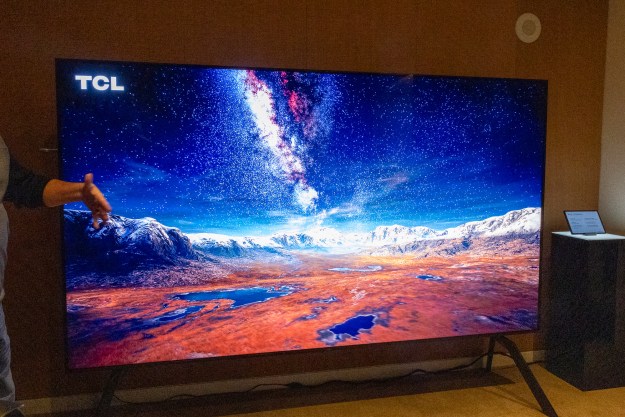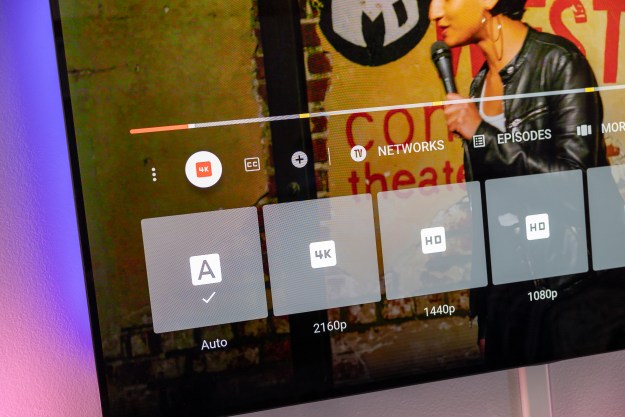Shortly after Apple announced the new pint-sized $99 HomePod mini, the company revealed an upcoming feature for the original HomePod: A “Home Cinema” mode that lets the HomePod be the default speaker for an Apple TV 4K. Home Cinema also enables Dolby Atmos on the HomePod, something Amazon has done with its Echo Studio and Fire TV devices. Along with Dolby Atmos, the HomePod will also work with Dolby 5.1 and 7.1 surround sound formats.
This capability isn’t quite ready for general release yet. To enable these features, you’ll need tvOS 14.2 and HomePodOS 14.2. according to FlatPanelsHD, both of which are still in a closed-beta period.
Much like the Echo Studio, Dolby Atmos will work on the HomePod as a stand-alone speaker, but it can also be made even more immersive when two HomePods are stereo paired. The new HomePod mini can also be used either alone or in a stereo pair with the Apple TV 4K, but in this situation, the smart speakers will only receive stereo — not 5.1, 7.1, or Dolby Atmos. That’s due to the cheaper speakers’ lack of the HomePod’s spatial awareness feature, according to The Verge.
The HomePod and HomePod mini are not compatible with each other for the purposes of stereo pairing, owing to their radically different sound signatures. This mirrors Sonos’ restrictions on which Sonos speakers can be stereo-paired.
I’ve tried out Dolby Atmos using a paired set of Echo Studios with a Fire TV Cube, and while the sound quality and immersive experience was a huge step up from my LG TV’s internal speakers, it fell short of the kind of experience you can get from a good Dolby Atmos soundbar, like the Sonos Arc.
The big difference is that a pair of Echo Studios will run you $400, while the Arc costs twice as much, so for some folks, it’s a good way to get much better sound for a lot less than an Atmos soundbar. The math on the HomePods may be a little less easy to rationalize. A pair of HomePods costs $600, which puts them much closer in price with some of the best affordable Atmos soundbars.
The HomePod is a more capable speaker than the Echo Studio, so I expect it will offer Apple TV 4K owners an even better Dolby Atmos performance. However, it’s worth noting that both the Echo Studio and HomePod rely on virtualization — a way of directing sound around a room that simulates the presence of additional speakers such as the dedicated up-firing height drivers that are the hallmark of most Dolby Atmos soundbars. Virtualization can be very effective, but it can also miss the mark, something we’ve seen even on very high-end soundbars like the Bang & Olufsen Beosound Stage.
In addition to more immersive movie soundtracks, Dolby Atmos on the HomePod will let you hear Dolby Atmos Music from select Apple TV 4K apps like Tidal HiFi. That’s a pretty big deal for folks who have been looking for ways to experience the music version of Dolby’s 3D audio format. But what would be even more exciting is if the HomePod could stream Dolby Atmos Music tracks from Tidal without having to use the Apple TV 4K as an intermediary device.
As Apple opens up the HomePod to more and more third-party music services, this could eventually happen. If it does, it would make a lot of sense if Apple’s own music service, Apple Music, began offering Dolby Atmos Music tracks too. So far, Apple Music has avoided any formats other than lossy AAC, even as services like Tidal, Amazon Music HD, Qobuz, and Deezer have been embracing higher-quality formats like lossless CD-quality, hi-res, Dolby Atmos Music, and Sony’s 360 Reality Audio.
Editors' Recommendations
- What we want to see from the next Apple TV 4K
- Samsung’s new 98-inch DU9000 4K TV is just $4,000. Can it beat TCL and Hisense?
- Hands-on with the Belkin iPhone Mount with MagSafe for Apple TV 4K
- If you don’t see CBS in 4K on YouTube TV, try this
- SharePlay is coming to Apple TV and HomePod




